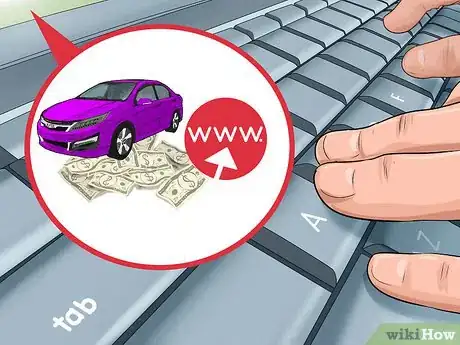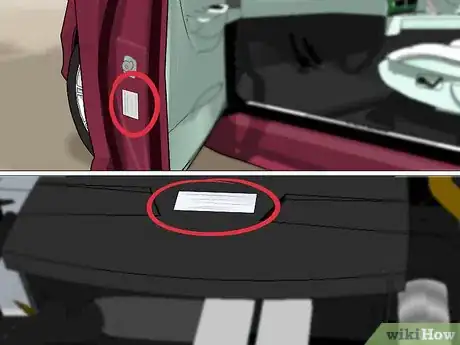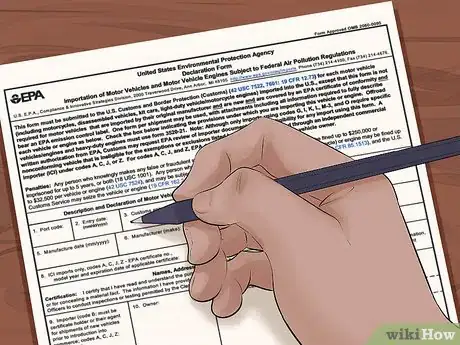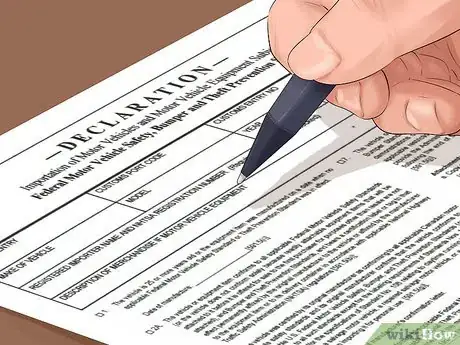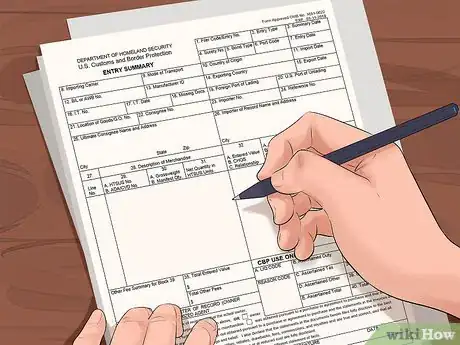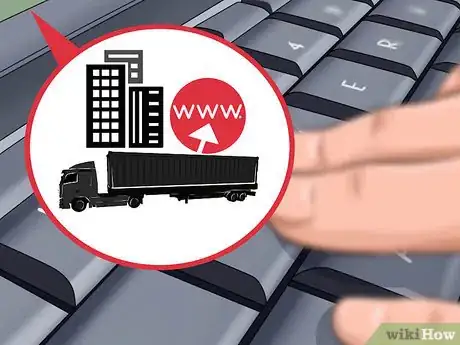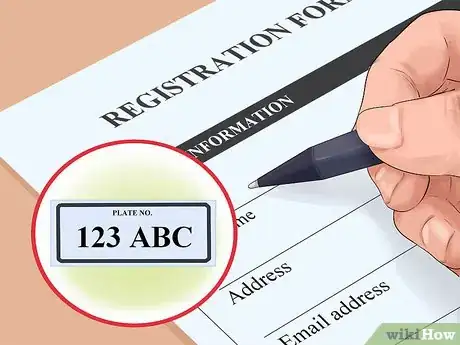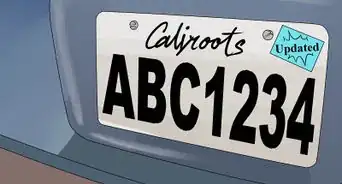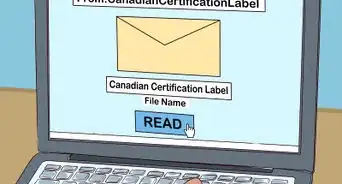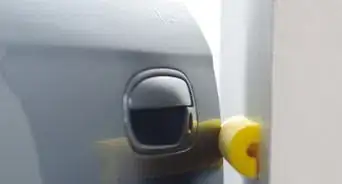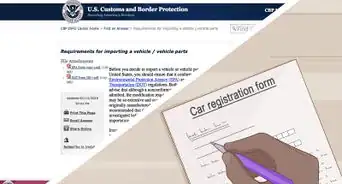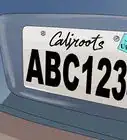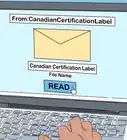This article was co-authored by wikiHow Staff. Our trained team of editors and researchers validate articles for accuracy and comprehensiveness. wikiHow's Content Management Team carefully monitors the work from our editorial staff to ensure that each article is backed by trusted research and meets our high quality standards.
There are 7 references cited in this article, which can be found at the bottom of the page.
wikiHow marks an article as reader-approved once it receives enough positive feedback. In this case, 93% of readers who voted found the article helpful, earning it our reader-approved status.
This article has been viewed 178,855 times.
Learn more...
Japanese cars are built well and look great, and if you’ve lived in Japan you may want to keep your car to drive in America, or you may be an American wanting to buy a car directly from Japan. Learn the steps necessary to importing a car from Japan so it’s ready to drive in the USA!
Steps
Finding and Inspecting a Japanese Car
-
1Visit Japan or look online. Find the car you want by visiting car dealers or auctions in Japan, have a friend do this for you, or search online for a car. Or choose to import a car you already own and keep in Japan.
-
2Look for a compliant car. Check your own car or buy a car that conforms to U.S. standards for safety and emissions by checking official lists for vehicles that conform or can be modified to conform to all requirements.[1]Advertisement
-
3Inspect the vehicle for valid stickers. Check to see if the vehicle complies with U.S. standards by inspecting or having the vehicle inspected by someone else for two different stickers. Look for a Department of Transportation (DOT) sticker in the doorjamb on the driver’s side of the car, and an Environmental Protection Agency (EPA) sticker on the car’s engine.[2]
- If either of these stickers are missing, you will need to get a letter or certificate from the certified manufacturer of the car that states that the car meets U.S. standards.
- If you are importing a vehicle that is 25 years old or older, it does not need to conform to EPA and DOT requirements, although you will still need to complete EPA and DOT paperwork in order to clear your vehicle through Customs and Border Protection (CBP).[3]
-
4Get an independent importer for a nonconforming car. If the vehicle does not meet U.S. safety and emissions standards, you will need to import it through an independent commercial importer (ICI) to perform modifications to make the car EPA compliant, or a registered importer (RI) to make DOT-approved safety modifications, before it is released to you. Note that some vehicles may not be eligible for these importer modifications.[4]
- Consult the Environmental Protection Agency’s website to find an ICI before you begin the process of importing your vehicle.[5] Refer to the National Highway Traffic Safety Administration to locate an RI.
- The advantage of using an ICI or an RI is that you may be able to import the vehicle you wish even if it doesn’t comply with U.S. standards to begin with. However, the disadvantage is that the fees associated with modifying and importing a car in this way are very high.
Completing Paperwork
-
1Fill out the EPA Form 3520-1. Complete this Environmental Protection Agency (EPA) form, which can be obtained online and completed in advance of importing the vehicle. You’ll need detailed information about the vehicle make and model, the status and use of the vehicle, and the ICI (if applicable).
-
2Fill out the DOT Form HS-7. Complete this Department of Transportation (DOT) form, which you can download and complete in advance of importing. You’ll need information about the vehicle make and model, the date and port of entry into the U.S., and the RI (if applicable).
-
3Complete the CBP Form 7501. Fill out this form with details about the vehicle and its value as evidence of the import through Customs and Border Protection (CBP). Complete this form at a valid CBP port (usually wherever it first enters the U.S.). You’ll need:
- Valid proof of ownership: the original certificate of title or a certified copy of the original
- Manufacturer’s letter/certificate: states that the vehicle conforms to U.S. EPA and DOT standards (you do not need this if the vehicle already has valid stickers)
- Completed EPA Form 3520-1 and DOT Form HS-7.[6]
Shipping the Car
-
1Have the car cleaned before shipment. Arrange for the vehicle to be steam-sprayed or cleaned thoroughly directly before shipment in order for it to pass the U.S. Department of Agriculture’s requirement to remove foreign soil from the undercarriage of imported cars.[7]
-
2Choose a carrier. Find a vehicle shipment company to transport your car to the U.S., and have them notify you of the arrival date so you can submit your paperwork to Customs and Border Protection (CBP).
- The shipping process should take approximately 10-17 days at $1,500-4,200 US Dollars, depending on the vehicle and the port of entry.[8]
-
3Pick up your vehicle at the port. Choose the port nearest to you to have your vehicle shipped to; most shipping companies will ship to ports all over the U.S. Note that the first port of entry into the U.S. is where the vehicle will be checked through Customs and Border Protection (CBP).
Preparing to Drive the Car in the U.S.
-
1Pay any duty fees. Pay a duty fee on your vehicle based on the price you paid for it or its blue book value. Duty rates are 2.5% on cars and 24% on trucks. You may be able to use an exemption toward this fee if you are a U.S. resident; check with Customs and Border Protection (CBP) to confirm this.[11]
-
2Pay federal tax. Depending on the type of your car, some imported vehicles are subject to the U.S. gas-guzzler tax. Pay the tax if your vehicle has a fuel economy rating of less than 22.5 miles per gallon, which can be determined by the manufacturer or an independent professional in the U.S.[12]
-
3Obtain valid license plates and registration. Register your imported car and acquire state license plates from your local Department of Motor Vehicles (DMV). Ask what documents they need from you or Customs and Border Protection (CBP) to complete these measures for a foreign car. You may also need or want to obtain an International Registration Marker.[13]
Community Q&A
-
QuestionI understand that I can import a Japanese car 25 years or older. Can the steering wheel be on the right?
 Community AnswerCars in the US are not required to be left-hand-drive. For example, most postal trucks are right-hand-drive here in the United States.
Community AnswerCars in the US are not required to be left-hand-drive. For example, most postal trucks are right-hand-drive here in the United States. -
QuestionI want to ship a car from Japan to Utah, what do I have to do?
 Community AnswerFirst check if the car is legal to drive or if you need a special permit, like the Nissan Skyline GTR R34 is not legal and same with the Nissan Silvia S15.
Community AnswerFirst check if the car is legal to drive or if you need a special permit, like the Nissan Skyline GTR R34 is not legal and same with the Nissan Silvia S15. -
QuestionCan I ship our 2015 Suzuki APV-GA van from the Philippines to Washington State, USA for our one-year stay in the USA?
 Community AnswerYou're better off selling the van in the Philippines and buying something used in the U.S. You'll save shipping costs, and you won't have to worry about whether your Suzuki van is road legal in America.
Community AnswerYou're better off selling the van in the Philippines and buying something used in the U.S. You'll save shipping costs, and you won't have to worry about whether your Suzuki van is road legal in America.
Warnings
- It is illegal to sell an imported car without entering it through Customs and Border Protection, so make sure you follow the whole process even if you plan to sell the car right away.⧼thumbs_response⧽
- Don’t attempt to transport personal items in an imported car. The vehicle will not be accepted by many shippers and carriers if it contains personal items, and even if it is, it will be subject to theft during transport and every item must be declared through CBP on arrival into the U.S. [14]⧼thumbs_response⧽
References
- ↑ https://www.nhtsa.gov/importing-vehicle
- ↑ https://www.youtube.com/watch?v=_1kXQDDuMZM
- ↑ https://help.cbp.gov/app/answers/detail/a_id/218/~/requirements-for-importing-a-vehicle-%2F-vehicle-parts
- ↑ http://www.cbp.gov/trade/basic-import-export/importing-car
- ↑ http://www.epa.gov/importing-vehicles-and-engines/independent-commercial-importers-icis
- ↑ https://help.cbp.gov/app/answers/detail/a_id/218/~/requirements-for-importing-a-vehicle-%2F-vehicle-parts
- ↑ http://www.cbp.gov/trade/basic-import-export/importing-car
- ↑ http://www.tradecarview.com/ship/?mk=0&mo=0&tm=0&oc=392&dc=840
- ↑ http://www.cbp.gov/trade/basic-import-export/importing-car
- ↑ http://www.matson.com/pov/booking/shipping_and_registration.htm
- ↑ http://www.cbp.gov/trade/basic-import-export/importing-car
- ↑ http://www.cbp.gov/trade/basic-import-export/importing-car
- ↑ http://www.cbp.gov/trade/basic-import-export/importing-car
- ↑ http://www.cbp.gov/trade/basic-import-export/importing-car
About This Article
To import a car from Japan to the USA, start by making sure that your car is compliant with US car standards by checking the US Office of Vehicle and Safety Compliance website. Next, complete the required forms on the US Environmental Protection Agency and the US Department of Transportation websites. Then, have the car cleaned to remove any foreign soil, choose a shipping company, and get the arrival date so you can have the paperwork ready for US Customs when you pick up your car. For more tips, like how to fill out the forms required by US Customs, read on!
